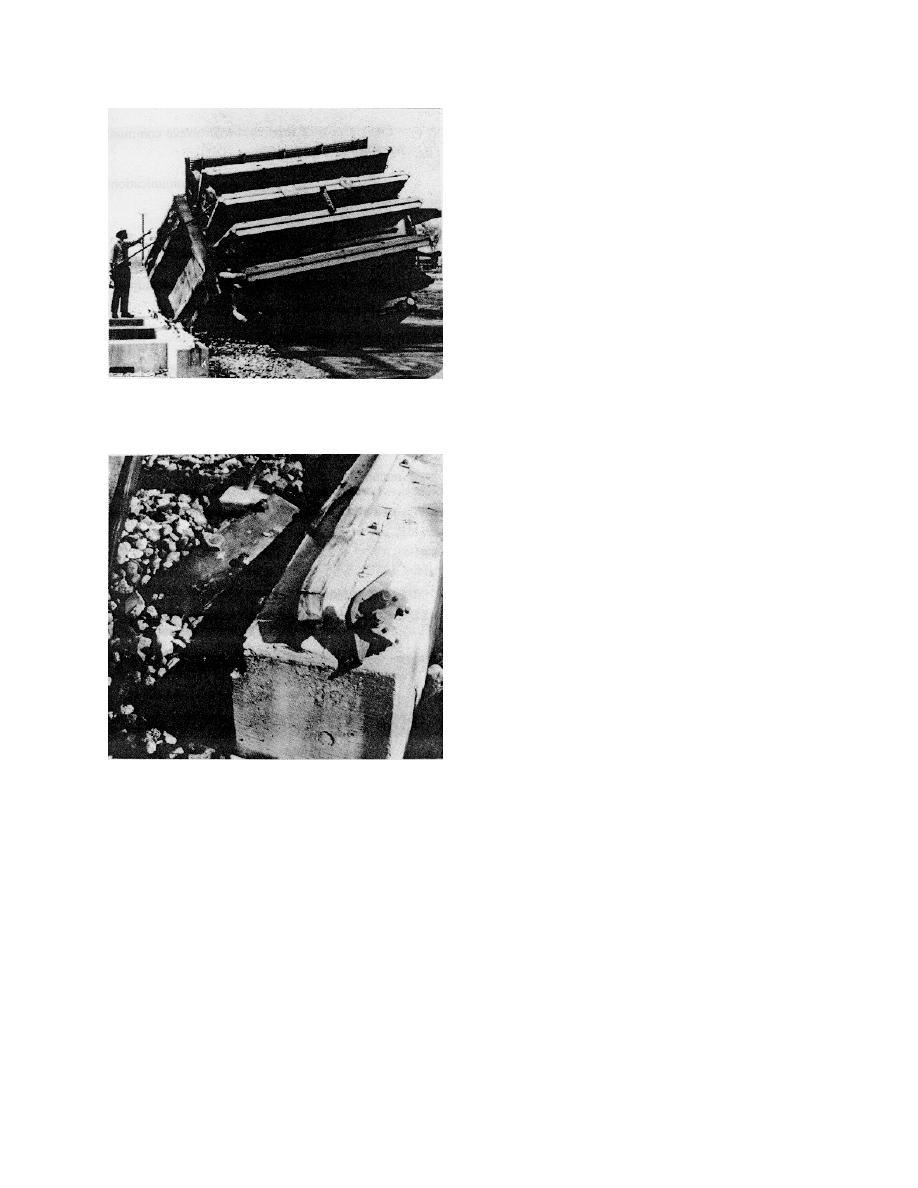
ETL 1110-2-533
30 Sep 94
c. Subsidence. Under certain conditions, an
earthquake may cause extensive settling and slumping
of the ground. This can cause severe damage to
buried utilities such as water, gas, and oil lines, par-
ticularly where they enter a structure, due to subsi-
dence of soil around the foundation of the structure.
It is very common for soil behind a bridge abutment
to settle, creating a large vertical offset in the road,
and disrupting or blocking traffic.
d. Ground faulting. Faults are fracture planes
in the ground where there is relative motion between
the rock on each side of the fracture. In areas with
multiple, closely spaced fractures, the area is referred
to as a fault zone. Anything spanning the fault, such
as buried pipe, cable, or a structure, can experience
severe deformations and loads. Depending on the
Figure B-2. Failure of a rail-mounted transformer
earthquake, the offset across a fault can be both hori-
zontal and/or vertical. Offsets across faults can be
quite large; the maximum observed in the Landers
earthquake was 23 ft.
e.
Earthquake-induced landslides.
(1) There are many regions in which earthquake-
induced shaking triggers landslides. The topography
and soil conditions are the primary controlling vari-
ables, but should the earthquake occur during a rainy
season when soils are saturated, the situation can be
aggravated. Slides can cause excessive deformations
in the ground, and the motion of the soil may sweep
away structures and equipment in its path. Pipelines
crossing the landslide or embedded in the moving soil
are usually severely damaged.
(2) Landslides that fall into bodies of water can
also induce large water waves. In the 1964 Prince
William Sound earthquake, a massive landslide
Figure B-3. Chock used to restrain rail-mounted
caused water to rise 1,500 ft above the surface of the
sound when the water wave impinged on the opposite
side of the sound.
(2) Factors contributing to liquefaction are the
amplitude and duration of shaking, a high water table,
f. Earthquake-induced water waves - tsunamis.
low soil density, and the granular character of the
Earthquakes occurring offshore that have vertical
soil. These conditions are common adjacent to rivers
components can generate large, long period waves,
and lakes.
called tsunamis. Typically, these waves are barely
perceptible in deep water; however, they can generate
(3) Buried pipelines are frequently damaged due
massive waves when encountering a land mass with
to liquefaction-induced soil deformations. The bell
certain types of shoreline topographies.
and spigot connections commonly used for water pipe
frequently pull apart, disrupting service.
B-3



 Previous Page
Previous Page
